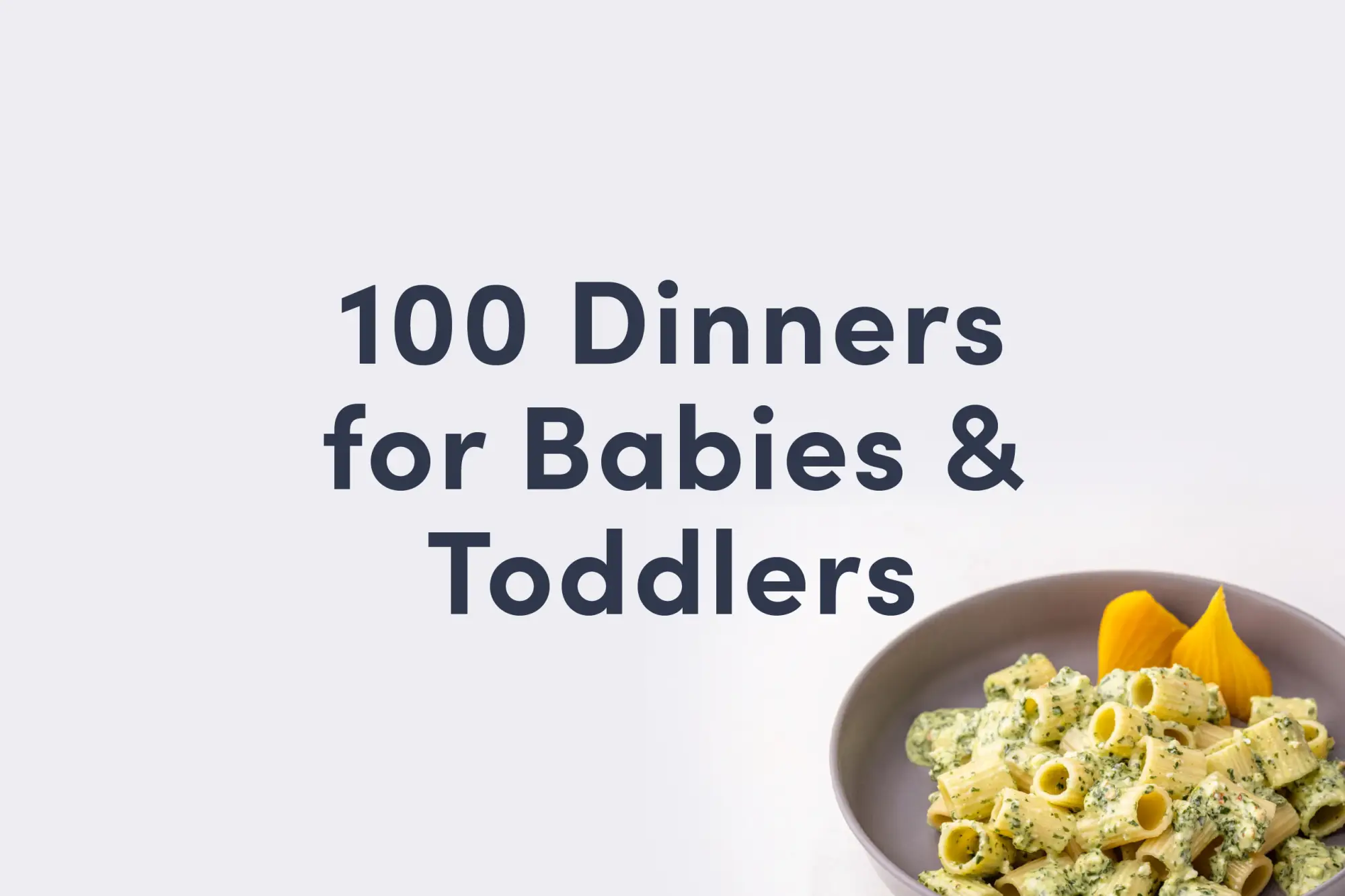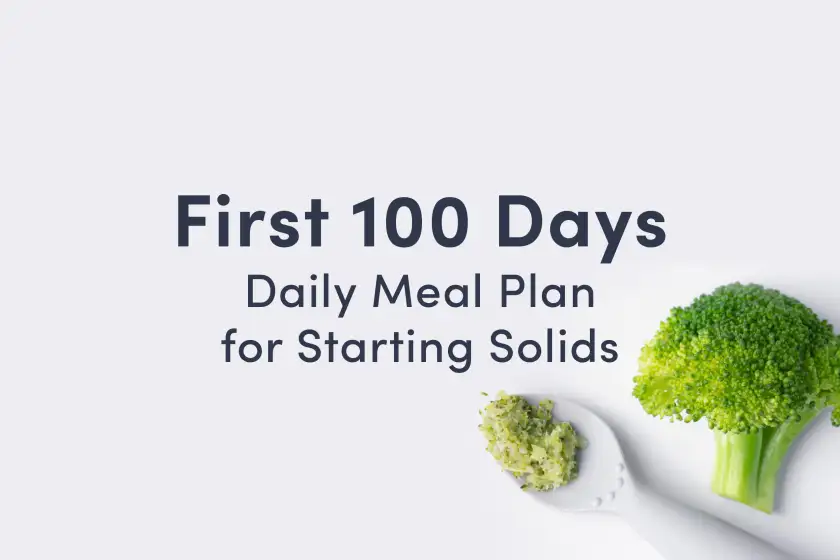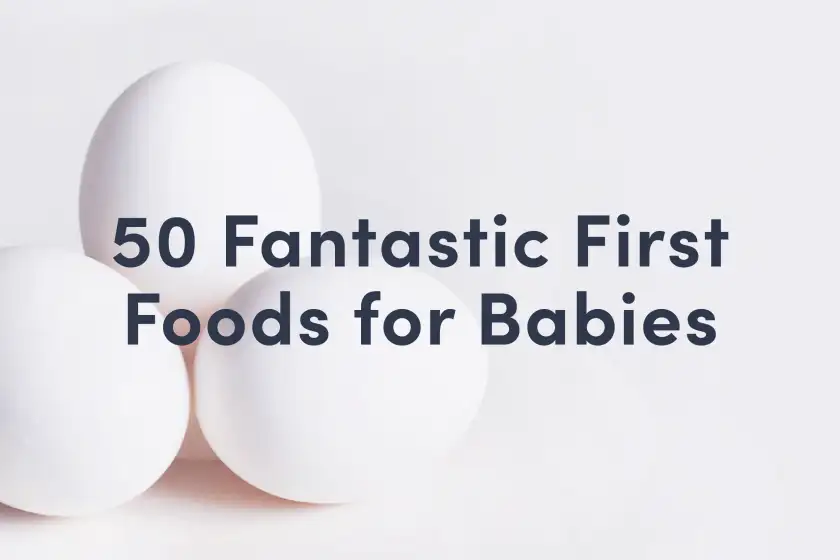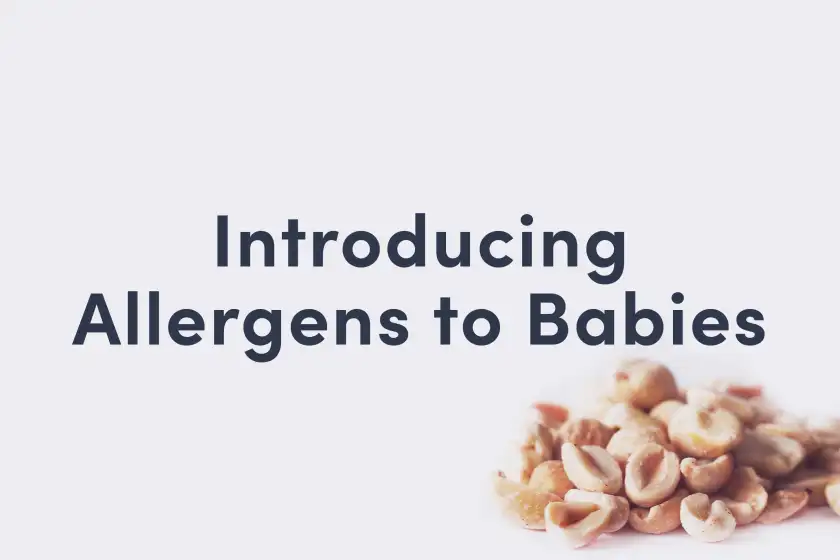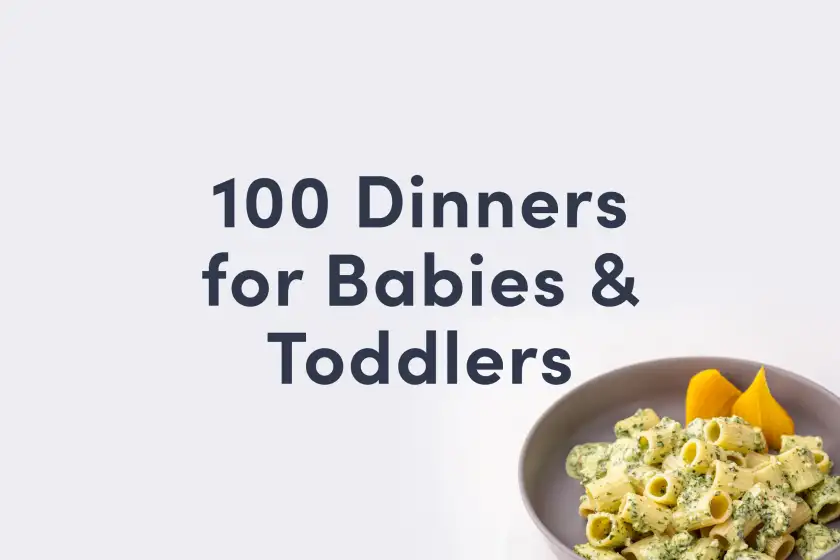Asparagus
Vegetable
Age Suggestion
6 months
Iron-Rich
No
Common Allergen
No
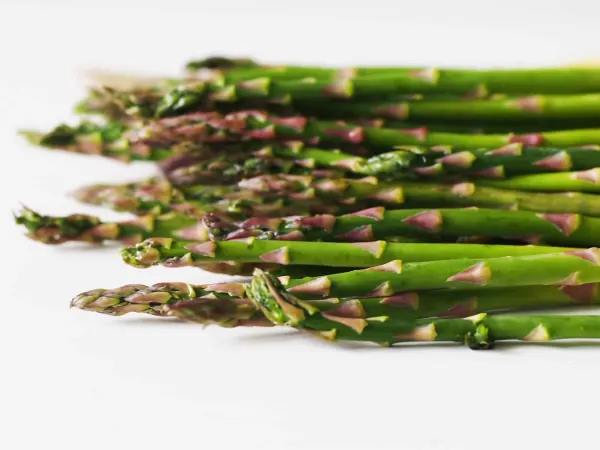
When can babies have asparagus?
Asparagus may be introduced as soon as baby is ready to start solids, which is generally around 6 months of age.
Asparagus thrives in sunny locales, where its young, tender spears are harvested before their skins grow woody and their flower buds (also called asparagus tips) start to open. Some think of asparagus spears as a green vegetable, but there are purple and white varieties, each offering nuanced flavor—some more herbaceous and sweeter than others.
Is asparagus healthy for babies?
Yes. Asparagus contains lots of folate to promote cell health and amino acid production, as well as vitamin B6 to help children process protein and carbohydrates. Generally speaking, the more colorful the food, the more vitamins and antioxidants within it. Asparagus is no exception: green and purple asparagus contain more vitamin A, plant-based iron, and antioxidants than white asparagus. No matter the color, all asparagus contain plenty of fiber, including prebiotic fiber, to help with digestion and a healthy microbiome.
It is not uncommon for asparagus to cause gas and some intestinal discomfort as a result of its carbohydrates and fiber content, so consider introducing asparagus slowly. Raffinose, a type of sugar also present in beans, whole grains, and other vegetables including broccoli, brussels sprouts, and cabbage, is one culprit. Asparagus also contains fructans, which can be difficult to digest for some people and causing gas, bloating, and diarrhea, and other symptoms. Lastly, the fiber in asparagus remains undigested until reaching the large intestine, where bacteria digest it through fermentation, causing gas. Start slowly and work your way up.
★Tip: Asparagus spears must be stored in the fridge—either wrapped in a damp towel in the produce drawer or standing upright in a glass of water, like flowers. The nutrients break down within a few days after harvest, so eat them within a day or two after purchasing.
Is asparagus a common allergen?
No. Allergies to asparagus are rare but have been reported. Individuals who are sensitive to plants in the Liliaceae family (chives, garlic, leek, onion, and shallots) may have an increased risk for asparagus allergy or experience hives or contact dermatitis from handling asparagus.
As with introducing any new food, start by serving a small quantity during the first couple of servings. If there is no adverse reaction, gradually increase the amount over future meals.
Is asparagus a choking hazard for babies?
Yes. Asparagus is cylindrical, plus it can be tough to chew. Ironically, the risk can be higher with chopped asparagus as a baby can more easily attempt to swallow a small round piece of food without chewing than a whole stalk, which would most likely be softened and flattened by munching or would trigger a strong gag. To reduce the choking risk, prepare and serve asparagus in an age-appropriate way. As always, make sure to create a safe eating environment, stay within arm’s reach of baby during meals, and check out the age-appropriate serving suggestions.
For more information on choking, visit our section on gagging and choking and familiarize yourself with the list of common choking hazards.
Videos
Why does urine smell after eating asparagus?
Consuming asparagus can result in a harmless but strong urine smell. The odor is believed to be caused by asparagusic acid being converted in the body to sulfur-containing chemicals that wind up in urine. Not everyone carries the gene that triggers the smell, and some people cannot smell the odor at all.
How do you serve asparagus to babies?
Every baby develops on their own timeline, and the suggestions on how to cut or prepare particular foods are generalizations for a broad audience.
6 months old +:
Offer whole cooked asparagus spears that have been cooked until soft; test for doneness by piercing with a fork. If you steam or boil asparagus, it may become limp and difficult for young eaters to pick up, so consider other preparations like grilling, sautéing, or roasting. Whole spears won’t yield much in the belly, but they are a fantastic food for building oral-motor skills, specifically tongue movement and chewing. When asparagus is cooked, you can leave it whole at this age: the way baby will munch on it fundamentally changes its round shape and reduces the risk of choking, even if they manage to tear a piece off. If you’d like to maximize consumption, slice cooked asparagus lengthwise and then chop and mix it into scoopable foods like egg dishes, grain salads, and mashed vegetables.
9 months old +:
At this age babies are likely developing their pincer grasp (where the thumb and forefinger meet) enabling them to pick up smaller pieces of food. As such, it’s a good time to go down in size from a whole spear to chopped or minced asparagus that has been cooked until soft. Because small, round pieces are more of a choking hazard than bites of munched on whole asparagus, we suggest you cut the asparagus lengthwise first (so it is no longer round) before chopping into smaller pieces. You can, of course, continue with large asparagus spears for biting and tearing practice.
18 months old +:
You have more choices at this age. Try increasing the size and serving a whole asparagus spear to teach a toddler how to take bites and how to chew (or spit if necessary). Or try serving chopped asparagus either on its own, with simple seasoning, or folded into soft foods that are easier for a child to eat. Around 18 months of age, many toddlers are also ready to tackle raw asparagus. Just remember that an asparagus spear’s woody, fibrous texture makes it quite challenging to chew, so expect lots of spitting until closer to age two.


Our First Foods Essentials bundle is a must-have for a strong start with solid foods.
Written by
Expert Tips Delivered to Your Inbox
Sign up for weekly tips, recipes and more!
The content offered on SolidStarts.com is for informational purposes only. Solidstarts is not engaged in rendering professional advice, whether medical or otherwise, to individual users or their children or families. No content on this site, regardless of date, should ever be used as a substitute for direct medical advice from your doctor or your medical or health professional, nutritionist, or expert in pediatric feeding and eating. By accessing the content on SolidStarts.com, you acknowledge and agree that you are accepting the responsibility for your child’s health and well-being. In return for providing you with an array of content “baby-led weaning” information, you waive any claims that you or your child may have as a result of utilizing the content on SolidStarts.com.


